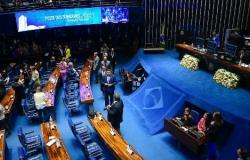With a score of 2.9, Maraã, in Amazonas, 600 kilometers west of Manaus, is the municipality with the worst score in the Brazilian Education Opportunities Index (Ioeb), prepared by Roda Educativa (formerly the Educational Community (Cedac) and the State Amazonas is classified in a critical situation in terms of access to quality education with a score of 4.6, among the worst in the country, along with Bahia (4.6), Sergipe (4.6) and Tocantins (4.6). Acre (4.5), Rio Grande do Norte (4.5), Pará (4.3), Amapá (4.2) and Maranhão (4.2) – all of them located in the North and Northeast regions.
The population of Maraã reached 15,520 people in the 2022 Census, which represents a drop of -11.46% compared to the 2010 Census, according to the Brazilian Institute of Geography and Statistics (IBGE). The municipality is ranked 49th in population in the state; 229th in the North region; and the 2,153rd in Brazil. And it has a demographic density of 0.92 inhabitants per km² and an average of 5.09 residents per residence.
On a scale of 0 to 10, Brazil is facing a tight year in terms of access to quality education. According to Ioeb, Brazil’s overall score in this regard rose from 5.0 to 5.1 between 2021 and 2022.
The indicator is based on the results of the School Census and the Basic Education Assessment System, analyzing how educational opportunities differ in each territory. To do this, it analyzes not only the students’ learning results, but also the inputs, that is, educational policy conditions to favor such learning.
Among the States, Ceará and São Paulo have the highest Ioeb, both with 5.5, but both received attention alert due to the little progress seen in the educational opportunities offered in their municipalities.
Even so, the Ceará city of Ararendá, located in the Sertão de Cratéus region approximately 330 km from Fortaleza and with around 10 thousand inhabitants, appears with the best score among all Brazilian municipalities: 7.3%.
On the other hand, São Paulo is the State with the largest number of municipalities with high Ioeb values – corresponding to 33.6% of those analyzed in the index.
The CEO of Roda Educativa, Tereza Perez, who manages Ioeb, explains that the justification for the flag of attention is due to progress below what was desired, as the index exists with the aim of stimulating improved access to education quality throughout Brazil.
She comments that the Ioeb inhibits the exclusive attribution of the result to an educational network or a specific segment by proposing a single index for all Basic Education – covering from Early Childhood Education to High School and considering all existing education networks in the territory (municipal , state and private) – as well as all local residents of school age, and not just those who are actually in school.
“Improving opportunities, from Ioeb’s perspective, can only occur through co-responsibility, through the implementation of the collaboration regime between States and municipalities, and through collaboration between municipalities and partnerships with civil society”, says Perez, also highlighting that the index is formed from the composition of certain indicators related to inputs, such as teachers’ education; average number of class hours and experience of principals, and educational results observed from the Basic Education Development Index.
Although the North and Northeast still have the worst rates, the CEO of Roda Educativa highlights that, at least, there have been important advances in some states.
“The Northeast continues to lead in terms of municipalities that made the greatest progress in 2023 [com 67% das cidades mostrando melhorias]. The North region showed growth with 19% of municipalities achieving positive variations above the median”, noted Perez.
But she considers that the South and Southeast regions still concentrate three out of every four municipalities with the highest Ioeb numerical values in 2023, indicating that the vast majority of municipalities that offer better educational opportunities to their children, adolescents and young people are concentrated in these two regions. .
“It is necessary to understand that inequality in educational opportunities causes harm not only to the lives of children, adolescents and young people, but also to public management and society as a whole. There is a high value invested in a student who repeats a year one or more times. And when he or she drops out of school and does not complete the expected education cycle, this reduces the chances of a good job and contribution to society”, explains Perez.
The expert concludes by drawing attention to smaller municipalities, especially those with less than 50 thousand inhabitants, which need more support in terms of collaboration so that educational inequalities are reduced.
“There are inequalities in revenue and teaching conditions, for example. An example of the impact of these distortions can be seen in the fact that most municipalities in the critical quadrant are small, with up to 50 thousand inhabitants”.
Tags: Amazonas among worst municipality Education Opportunities Index
--





